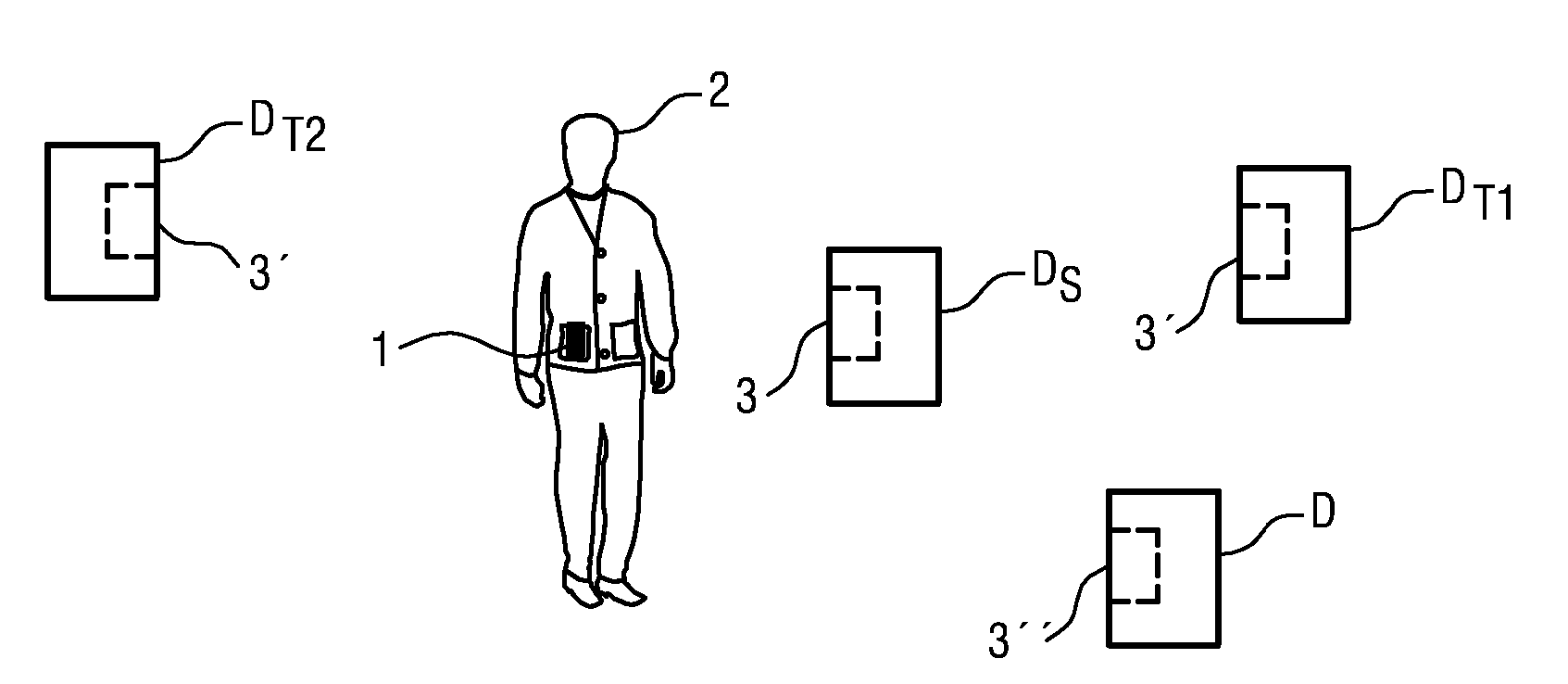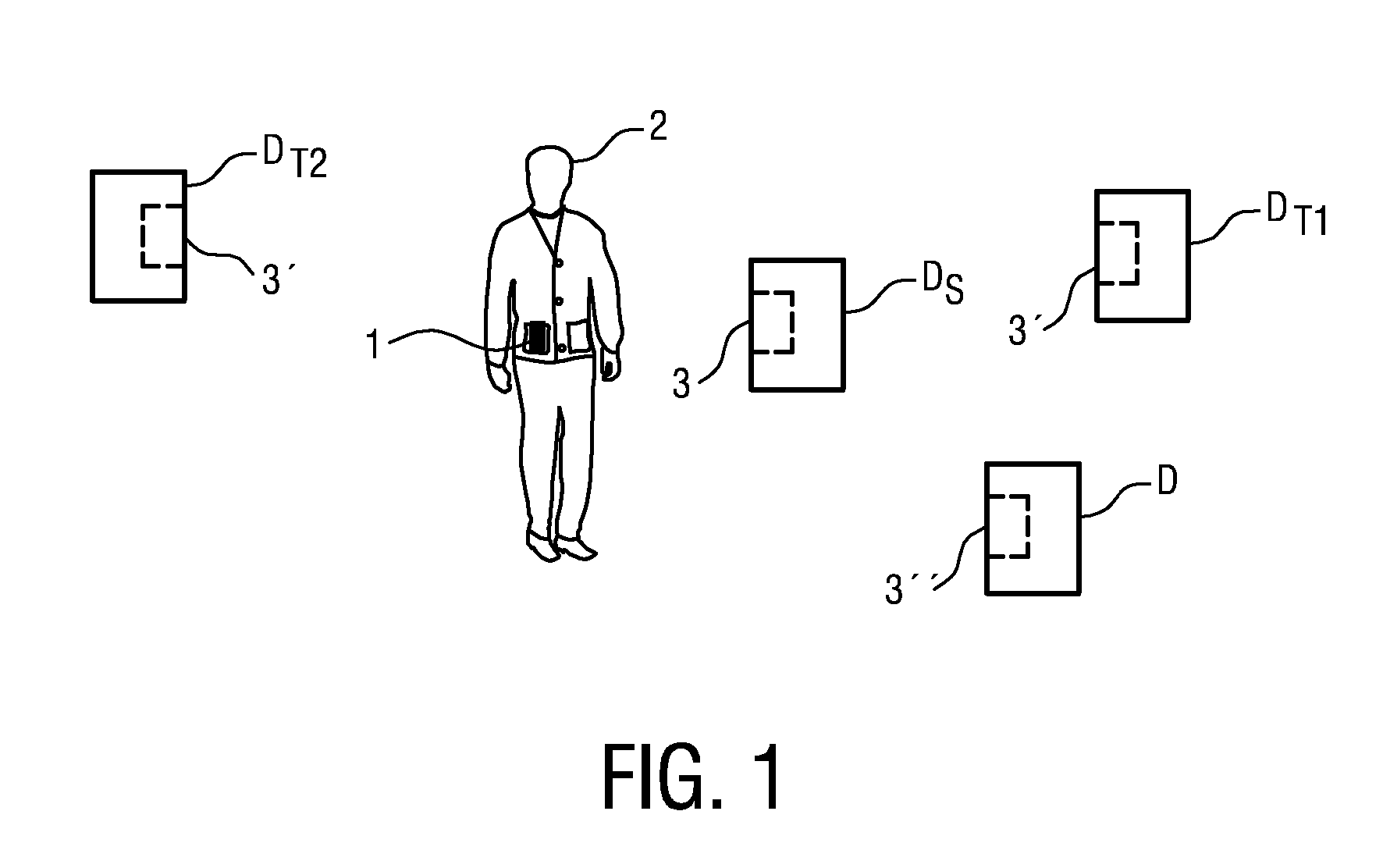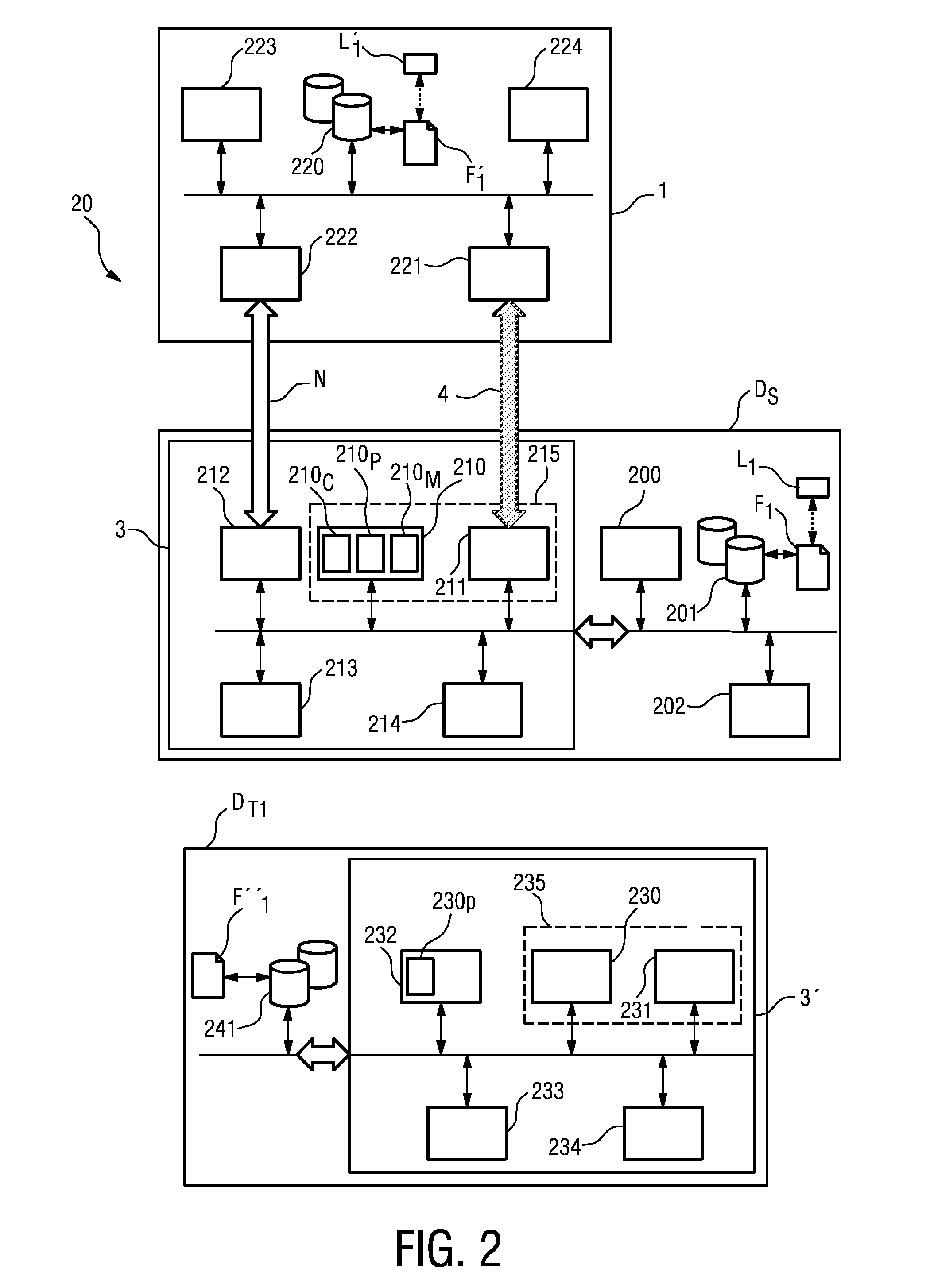[0008]Therefore, it is an object of the invention to provide an easy and comfortable method of transferring data from a source device to a target device, while avoiding the problems described above.
[0016]The method according to the invention is particularly advantageous since the data transfer is initiated by a simple touch operation on the part of the user. This “just touch” interaction for exchanging network parameters, using the
human body as a
signal transmission medium, is extremely simple to use and completely intuitive. Another obvious
advantage of the method according to the invention is that, since application data is transferred wirelessly to and from the memory device, the user does not need to physically connect the memory device itself into an interface socket of either the source or target devices. The data transfer is carried out in a comfortable, intuitive, and easy manner. Since the user can carry the memory device on his person, for example in a jacket or trouser pocket, he is spared the
exertion of having to insert the memory device into an interface of the first or second devices. Furthermore, since the memory device remains on the person of the user, it cannot be left forgotten in a device interface.
[0018]As mentioned above, technological developments in recent years in the field of intrabody communication (i.e. data transfer through the
human body) have made it possible for data to be successfully transferred from a source device to a destination device, using the
human body as a carrier. Broadly speaking, it is essentially possible to transmit application data between the memory device and a source or target device, through the body of the user, over a connection established on the basis of the connection-related data already exchanged through the user's body.
[0021]Various standards have been established for
wireless radio communication over short distances, for example the IEEE 802.11 (
Wireless LAN) and IEEE 802.15 (
Wireless PAN) standard. A network of devices close to a person (generally at a distance of a few meters) is called a
personal area network, or PAN. When these communicate in a
wireless manner, the network is termed a
wireless PAN, or WPAN. Several network technologies have been developed for wireless personal area networks. One of the most well-known is
Bluetooth, allowing different devices to communicate with one another. Another, more recent, technology is the ZigBee standard, which can be simpler to implement, allowing the realisation of low-cost devices.
[0025]As already mentioned above, application data transferred from a source device to the memory device can have more than one target device as destination. For example, a single file might be intended for more than one target device. Alternatively, one file might be intended for a first target device while another file is intended for a second target device. One of the advantages of the invention is that application data can automatically be transferred to the intended target device without the user having to browse the contents of the memory device to select a file for transfer to the appropriate target device. In a particularly preferred embodiment of the invention, a
label specifying certain transfer parameters or conditions is created for the application data, and the
label is transferred with the application data to the memory device. For example, the
label can be created at the point where a user has selected a file on the source device, before the application data is transferred to the memory device. The label can specify the target device for which the file is intended, making it easy for the user to copy, paste, or move different files—transferred to the memory device in a
single session from the source device—to a number of different target devices. For instance, a user can specify a portable
music player as the intended target for a selection of music files, his car stereo as the intended target for the same or other music files, a
home entertainment system as the intended target for a video file, and another PC as the intended target for spreadsheet or text documents. Then he can transfer all the files, in one session, to his memory device. Thereafter, by simply touching the touch interfaces of the target devices in turn, the application data intended for the relevant target device will be transferred automatically. Needless to say, the target devices can be located anywhere, and the user can effect the data transfer from the memory device to one of the target devices at any convenient time when in the vicinity of that target device.
 Login to View More
Login to View More  Login to View More
Login to View More 









